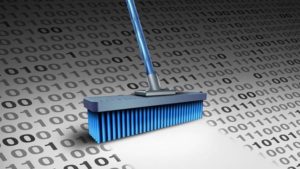 Hospitals and healthcare systems across the US have spent billions of dollars per year over the last decade implementing electronic medical record (EMR) systems across their operations. A lot of the promise of EMR systems for hospitals is the data that they can collect that can be used for a wide range of analyses: cost of care, utilization analysis, population health, clinical effectiveness, etc.
Hospitals and healthcare systems across the US have spent billions of dollars per year over the last decade implementing electronic medical record (EMR) systems across their operations. A lot of the promise of EMR systems for hospitals is the data that they can collect that can be used for a wide range of analyses: cost of care, utilization analysis, population health, clinical effectiveness, etc.
However, EMRs are not guaranteed to return the dollars that hospitals are spending on them without the proper data and processes to back them up. Dirty data going into an EMR results in dirty data coming out of an EMR. It is therefore imperative that hospitals do all they can to ensure that clean data is always entered into the EMR, for without it they may struggle to realize the benefits they were seeking when they decided to invest in them. As this article by Tina Murphy at Supply & Demand Chain Executive discusses about the importance of clean data in the EMR:
“But there is an even bigger prize that an accurate, clinically-focused item master can help to deliver, and that is the key to answering one of the critical questions in healthcare today: what the cost of care truly is. When suppliers and providers have real world evidence of when products work and in what circumstances, that is when quality of care can really improve. It is the bullseye of the triple aim—cost, quality and outcomes. It is good for suppliers; it’s good for providers; and it’s great for patients.
EHRs won’t solve this on its own. They need accurate data. And that data should come from an on-demand virtual item master; one that aggregates multiple sources of data, ranging from suppliers to regulatory databases to industry standards groups, into an enriched, consumable state. Further, the on-demand virtual item master must allow integration to a variety of systems via multiple technical protocols in support of numerous business processes. It is the combination of aggregation with delivery to the “last mile” that is key to success for the on-demand virtual item master.
The problems that it solves are several-fold and all too familiar to provider organizations. These organizations need continuously up-to-date product data from many sources with a broad range of attribute information in the system. Nurses and clinicians need complete information of products used in the course of patient care, so they are not forever searching Google to get information to load into the EHR. This allows hospitals to document all supply usage for accurate charge capture, while not having to disrupt the item master maintenance best practices they have established for their buying and inventory management processes. Bottom line, providers need a trusted data source, without having to grow its item master, in order to perform total case costing and other key analytics.
Manual Entry Leads to Inconsistent Data
Taking this down one level deeper, traditional item masters contain only routinely purchased products. Often it is missing many of the supplies that the clinicians need to document in the patient record. At the point of use a clinician then has to stop what he/she is doing, take focus off the patient, attempt to find a product in the EHR item file, and if he/she doesn’t find it, manually enter the information into the patient’s record. Unfortunately, this happens quite often. Clinicians are manually documenting approximately 50 percent of items used in a case, if not more.
What we’ve discovered is that this manual process leads to inconsistent data entry, making it extremely challenging for the supply chain and revenue cycle teams to accurately identify which products were used on a patient. In the worst case, the clinician, out of frustration, simply skips manual documentation. The result is that providers are sometimes capturing only 40-50 percent of charges for every case. As a result, the health system might be losing millions in revenue annually.”
Read the entire article at: An On-Demand Virtual Item Master Is the Key to Data Silos in the Healthcare Industry
As the article states, a common roadblock to getting value out of the EMR is clean data. With so many people interfacing with an EMR and entering data, it becomes extremely important for hospitals to simplify data entry as much as possible. Automated data capture systems, such as iRISupply, can provide high quality data by integrating RFID data capture technology directly into your EMR, eliminating the need to have clinicians re-enter supply and implant information into the EMR during hectic procedures. Eliminating these manual requirements can lead to a host of benefits to the hospital: improved patient outcomes, higher revenues and lower costs.
